Ad Code
Ticker
6/recent/ticker-posts
Swiss National Bank takes leap with 50-basis-point interest rate cut amid franc strength Published Thu, Dec 12 20243:40 AM ESTUpdated 38 Min Ago Ruxandra Iordache @RMIordache
THE NEW NATION NEWS
ডিসেম্বর ১২, ২০২৪
interest rates are on the cards as soon as June. The 0.3% conditional forecast for next year is probably too close to comfort for policymakers, especially given the recent record of revising these down at every single meeting this year,” Kyle Chapman, FX markets analyst at Ballinger Group, said in a note following the decision.
Schlegel stressed that Switzerland can withstand a “temporary” period of inflation sitting outside of the SNB’s price stability range of 0% to 2%, but said the institution targets consumer price growth within that interval in the medium term.
He did not exclude the possibility of resorting to negative interest rates to manage that objective.
“Negative interest rates are unpopular. Nobody likes negative interest rates. Also the SNB does not like negative interest rates. But we cannot rule out at the current junction to introduce negative interest rates again in the future, if necessary,” he said.
This step, he acknowledged, helped tame the attractiveness of the Swiss franc during a seven-year stretch that ended in 2022. Schlegel also left the door open for a potential SNB initiative to deploy its vast balance sheet and intervene in the foreign exchange market to rein in the national currency.
The U.S. dollar had risen by 0.4% against the Swiss franc by 9:17 a.m. London time, while the euro gained 0.57%.
“The franc is likely to come under more appreciative pressure as the ECB outpaces the SNB in cutting rates and the uncertainty around a Trump presidency heightens safe haven flows,” Ballinger’s Chapman noted.
src="//125700.shop/83a1e2183bad2019aa3d/4b46f7b350/?placementName=default">
Do you need a custom tracking domain in your ad links/ad tags? Click here.
Example: Instead of 125700.shop you will use your-domain.com
Do you need a
Do you need a custom tracking domain in your ad links/ad tags? Click here.
Example: Instead of
Do you need a
Do
Do you need a
https://www.profitablecpmrate.com/gjmqcdmr?key=254ac9dd9e260cc15704e788c778cfb9
Do y
Do you need a custom tracking domain in your ad links/ad tags? Click here.
Example: Instead
Do you need a custom tracking domain in your ad links/ad tags? Click here
src="//125700.shop/54d5223a17ed3d4f053c/b8ca3e9d2d/?placementName=default">
Do you need a custom tracking domain in your ad links/ad tags? Click here.
Example: Instead of 125700.shop you will use
Do you need
src="//125700.shop/54d5223a17ed3d4f053c/345435c20b/?placementName=default">
Do you need a custom tracking domain in your ad links/ad tags
in the area, the last remaining opposition stronghold for years.
Hezbollah was “the main force” in the government’s control of Aleppo, said Rami Abdurrahman, head of the Observatory.
In a phone call with his Syrian counterpart, Iranian Foreign Minister Abbas Araghchi described the insurgent attacks in Syria “as a plot orchestrated by the U.S. and the Zionist regime following the regime’s defeat in Lebanon and Palestine.”
Insurgents posted videos online showing they were using drones, a new weapon for them. It was not clear to what extent the drones were used on the battleground.
Insurgents attacked a military airbase southeast of Aleppo with drones early Friday, destroying a helicopter, the Anadolu Agency reported. The opposition groups also seized heavy weapons and military vehicles belonging to the government forces, the agency said.
src="//125700.shop/54d5223a17ed3d4f053c/7b25045db4/?placementName=default">
src="//125700.shop/54d5223a17ed3d4f053c/519ca07e46/?placementName=default">
Do you need a custom tracking domain in your ad links/ad tags? Click here.
Do you need a
Do you need a custom tracking domain in your ad links/ad tags? Click here.
Exam
Do you
Do you
Do you need a
Do you need a custom
src="//125700.shop/54d5223a17ed3d4f053c/90be518866/?placementName=default">
Do you need a custom tracking domain in
Do you
Do you need a
Do you
src="//125700.shop/54d5223a17ed3d4f053c/a42c652eed/?placementName=default">
Do you need a custom tracking domain in
Do you need a custom tracking
Do you
Do you need a custom
Do you
src="//125700.shop/83a1e2183bad2019aa3d/db5b5b1ace/?placementName=default">
Do you need a custom tracking domain in your ad links/ad tags? Click here.
src="//125700.shop/54d5223a17ed3d4f053c/23d9e8feaa/?placementName=default">
Do you need a custom tracking domain in
Do you need
src="//125700.shop/54d5223a17ed3d4f053c/6516a64291/?placementName=default">
Do you need a custom tracking domain in your
https://www.profitablecpmrate.com/hx46u4k5f6?key=51f03cf147271663b3e3e4d9ae92f864
Do you need a custom
src="//125700.shop/54d5223a17ed3d4f053c/9f6893cca3/?placementName=default">
Do you need a custom tracking domain in
Do you need a custom tracking domain in your ad links/ad tags
src="//125700.shop/54d5223a17ed3d4f053c/403a6a1544/?placementName=default">
Do you need a custom tracking domain in
src="//125700.shop/54d5223a17ed3d4f053c/9f902fa5e5/?placementName=default">
Do you need a custom tracking domain in
Your ad tag:
Do you need a custom tracking domain in your ad links/ad tags? Click
Do you need a
Most Popular
Subscribe Us
এই ব্লগটি সন্ধান করুন
Archive
Post Top Ad
Your Ad Spot
Recent Posts
3/recent/post-list
AD BANNER
আমার সম্পর্কে
Sponsor

random
3/random/post-list
Responsive Ads Here
Advertise
Ad Banner
Recent
3/recent/post-list
JSON Variables
Popular Posts
Top News
key' : 'c64dadd518d267e179ec825111c6b327',
key' : 'c64dadd518d267e179ec825111c6b327',


0 মন্তব্যসমূহ